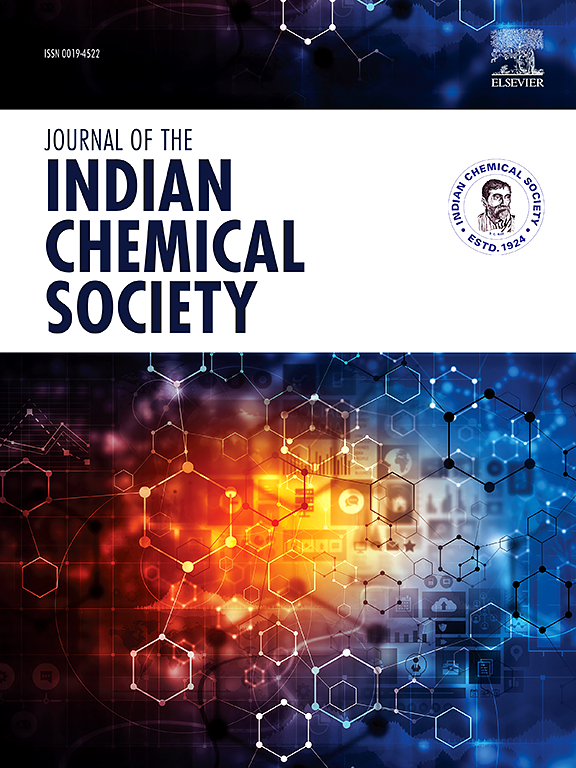Red mud-chitosan composite for dye pollution control: A low-cost solution for industrial waste valorization in developing countries
IF 3.2
4区 化学
Q2 CHEMISTRY, MULTIDISCIPLINARY
引用次数: 0
Abstract
A novel composite adsorbent (CS-4) was synthesized by integrating industrial waste red mud with chitosan, demonstrating exceptional congo red (CR) dye removal efficiency (98.36 %) and a high adsorption capacity of 684.79 mg/g. The adsorption performance was systematically evaluated through equilibrium, kinetic, and thermodynamic analyses. Among tested isotherm models, the Freundlich equation (R2 = 0.9895, at 298K) exhibited superior correlation with experimental data, revealing the dominance of multilayer adsorption on the heterogeneous CS-4 surface. Kinetic studies identified pseudo-second-order behavior (R2 = 0.9858, at 298K), emphasizing chemisorption mechanisms including electrostatic attraction, hydrogen bonding, π-π interactions, and pore diffusion. Thermodynamic calculations confirmed the process spontaneity (ΔG < 0) and endothermic characteristics (ΔH > 0) of the process. The composite's hierarchical porosity (BET surface area = 39.53 m2/g) and regenerability (92 % efficiency retained after five cycles) underscore its dual environmental benefit, valorizing hazardous RM waste while addressing dye pollution. These findings validate the dual environmental benefit of valorizing industrial waste while addressing dye pollution.

红泥-壳聚糖复合材料染料污染控制:发展中国家工业废物增值的低成本解决方案
以工业赤泥和壳聚糖为原料合成了一种新型的复合吸附剂CS-4,对刚果红染料的去除率高达98.36%,吸附量高达684.79 mg/g。通过平衡、动力学和热力学分析系统地评价了吸附性能。在测试的等温线模型中,Freundlich方程(R2 = 0.9895,在298K处)与实验数据具有较好的相关性,表明多层吸附在非均相CS-4表面上占主导地位。动力学研究确定了伪二阶行为(R2 = 0.9858,在298K下),强调化学吸附机制包括静电吸引、氢键、π-π相互作用和孔隙扩散。热力学计算证实了这一过程的自发性(ΔG <;0)和吸热特性(ΔH >;0)的过程。该复合材料的分层孔隙率(BET表面积= 39.53 m2/g)和可再生性(五次循环后仍保持92%的效率)强调了其双重环境效益,既能消除有害的RM废物,又能解决染料污染问题。这些发现证实了工业废水处理和染料污染的双重环境效益。
本文章由计算机程序翻译,如有差异,请以英文原文为准。
求助全文
约1分钟内获得全文
求助全文
来源期刊
CiteScore
3.50
自引率
7.70%
发文量
492
审稿时长
3-8 weeks
期刊介绍:
The Journal of the Indian Chemical Society publishes original, fundamental, theorical, experimental research work of highest quality in all areas of chemistry, biochemistry, medicinal chemistry, electrochemistry, agrochemistry, chemical engineering and technology, food chemistry, environmental chemistry, etc.

 求助内容:
求助内容: 应助结果提醒方式:
应助结果提醒方式:


